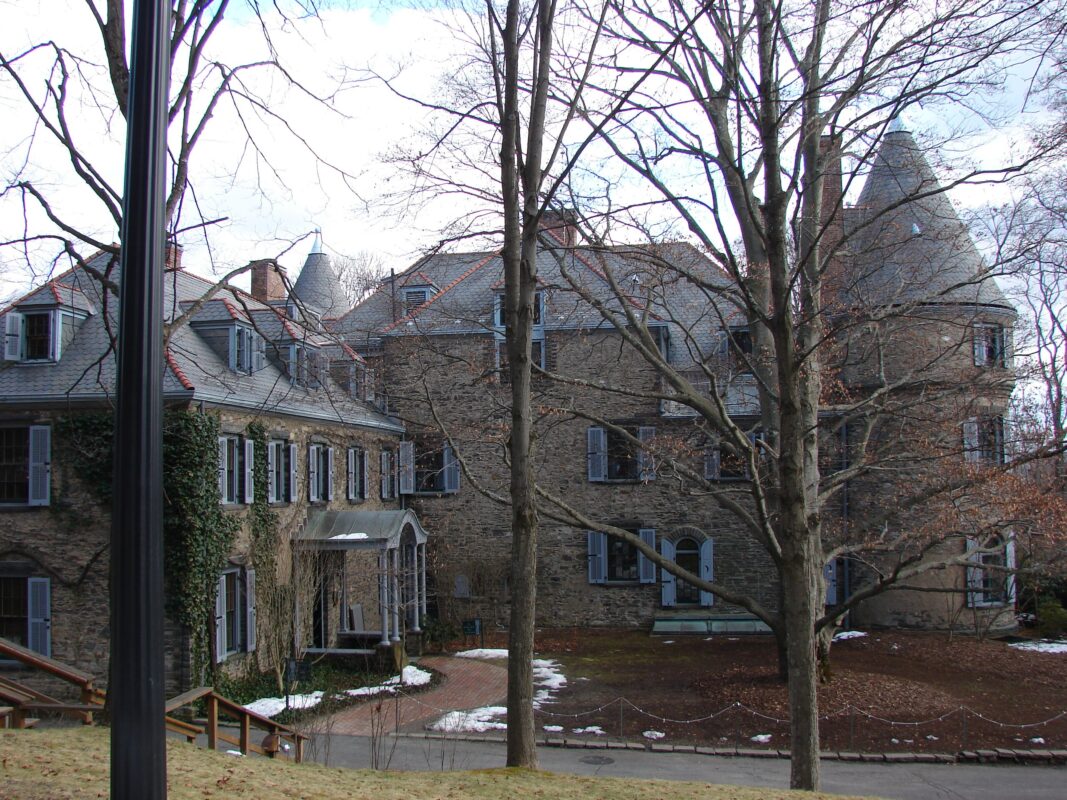If you’re a history buff with a flair for ghost hunting, few places in Pennsylvania stir the soul—and maybe a few spirits—like Grey Towers. Nestled in the picturesque town of Milford, this Gilded Age mansion is not only a national historic site but also a potential hotspot of paranormal intrigue. From its opulent beginnings as a summer retreat for a wealthy family to tales whispered by docents of eerie presences, Grey Towers is a destination with layers waiting to be uncovered. Whether you’re a traveler fascinated by American heritage or a paranormal investigator with EVP equipment in hand, this mysterious mansion is calling your name.
The History
From Lumber Fortune to Legacy: The Pinchot Family
Grey Towers began as the dream project of James Pinchot, a wealthy wallpaper merchant from New York City. In the late 19th century, James sought to build a summer home that reflected his French heritage and family prestige. Construction was completed in 1886, and the chateau-like structure quickly became a symbol of opulence and refined taste. Designed by architect Richard Morris Hunt, best known for iconic homes like The Biltmore Estate in North Carolina, Grey Towers features 43 rooms, elaborate stonework, ornate wood finishes, and wide sweeping views of the Pocono Mountains.
While James Pinchot laid the foundation—both figuratively and literally—for Grey Towers, it was his son, Gifford Pinchot, who elevated the estate into the annals of American history. Gifford is best known as the first Chief of the United States Forest Service under President Theodore Roosevelt and later as the governor of Pennsylvania. A pioneer of environmental conservation, Gifford used Grey Towers not just as a residence but as a working center for dialogue among conservationists, politicians, and scientists during the turn of the 20th century.
Grey Towers in Public Hands
After Gifford Pinchot’s passing in 1946, the estate began to wane in use and significance—at least for a time. In 1963, the Pinchot family donated Grey Towers to the American people. President John F. Kennedy dedicated the site, which was integrated into the U.S. Forest Service to serve as a conservation institute as well as a memorial to Gifford Pinchot’s work. Today, the mansion functions as both a museum and a training site for conservation professionals, and it remains open for public tours from spring through fall.
Although the estate exudes elegance and solemn historical importance, many who visit can’t help but notice a strange atmospheric edge. Could it be echoes of the past—or something more lingering?
The Haunt
Whispers Among the Pines
Grey Towers may look serene, but beneath its well-manicured exterior lies something decidedly otherworldly. Staff members and visitors over the years have reported subtle yet consistent signs of paranormal activity. From shadowy figures glimpsed at the fringes of candlelit rooms to unexplained footsteps echoing through empty halls, the mansion seems to hum with a presence that cannot be easily explained away.
One of the most talked-about apparitions is believed to be that of Cornelia Bryce Pinchot, Gifford’s outspoken and philanthropic wife. Known for her social activism and sharp wit, Cornelia’s spirit is said to make herself known in the iconic “Finger Bowl” outdoor dining area as well as in the family’s personal quarters. She was a woman who broke barriers in her time, and many believe she may not yet be done making a statement.
The Finger Bowl Phenomenon
If you’re even mildly sensitive to spiritual energies, you may want to pay special attention to the Finger Bowl. This circular open-air dining structure—where conversations once flowed over floating trays of hors d’oeuvres—has become infamous for cold spots and feelings of unease. Paranormal investigators report spikes on EMF detectors in this location and strange audio recordings during EVP sessions. Could this be evidence of social gatherings still taking place in the dusk of another dimension?
Doors, Drafts, and Disembodied Voices
Other common experiences include doors opening and closing on their own, sudden cold drafts with no apparent source, and the faint sound of music playing from areas that remain locked and unused. During one after-hours tour, a staff member recalled hearing a piano playing softly in the Gold Room, only to find it completely empty and the keyboard covered.
While there are no official records of tragedy on the estate, some believe the strong emotional imprint left by the Pinchot family, particularly their deep commitment to social change and environmental preservation, could be contributing to the residual energy within the home. Emotional energy, after all, has its own peculiar kind of permanence.
Ghost Hunters: Why Grey Towers Should Be on Your List
If you’re a seeker of the spectral, Grey Towers offers a tantalizing blend of rich American heritage and lingering paranormal mystery. Unlike many haunted sites that are tied to violent pasts or tragic endings, Grey Towers’ hauntings (if such they be) carry a tone of aristocratic complexity—one that values intellect, reform, and possibly eternal conversation among like-minded spirits.
The estate grounds are open to the public seasonally, offering guided tours that take visitors through the mansion, its artful gardens, and the renowned Finger Bowl. While the tours are historically focused, don’t be surprised if your camera captures more than just finely carved oak panels. Ghost hunters, arm yourselves with thermal imaging cameras, spirit boxes, and a keen sense of intuition—because Grey Towers has a story that continues to unfold long after dark.
So pack your gear and head to Milford. The spirits of Gifford and Cornelia may be waiting to greet you with a whisper in the wind—or perhaps a creak in the century-old floorboards of Grey Towers.

